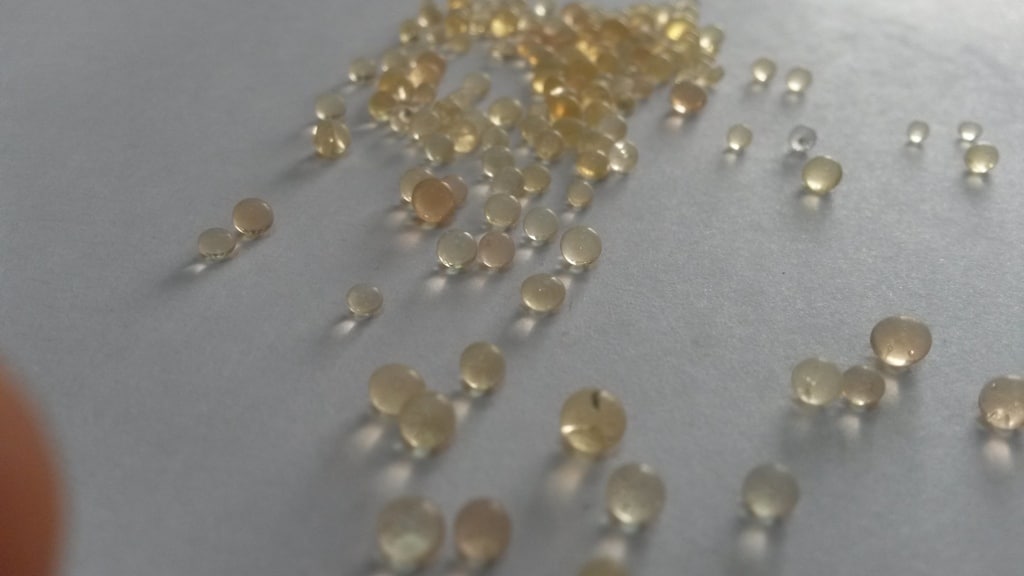Silica gel – is a product obtained by dehydration of sodium silicate. This substance exhibits the best absorption capacity with moisture content 5-7%,. After drying silica gel resembles a glassy solid mass with high porousness. Exactly this property, as well as its mechanical strength are the reasons for the continuing research in new methods of obtaining silica gel. Pores are even in size and are regularly distributed over the entire volume of substance. The methods for production of small-pore and large-pore silica gels are uniform. They are commonly used in a grain size of 0,2-7 mm. After absorbing moisture, silica’s ability to interact with vapors or other substances is significantly reduced. Compared with activated carbon, silica has one distinct advantage – in withstanding high temperatures. But with temperature fluctuations it can crack and spill. Technical silica gel is granulated and lumpy depending on the form of grains. It is produced in batches. The product quality document must contain the following information:
- Product name;
- Manufacturer name and trademark ;
- Batch number;
- Date of manufacture;
- Number of units in a batch;
- Mass;
- Tested according to norms and regulations.
Drying of silica gel
Silica gel has greater thermal stability and physical strength than other absorbers, such as activated charcoal. Thanks to its good hydrophilic properties, it is very valuable for drying air, oxygen, chlorine, nitrogen, hydrogen, carbon dioxide, etc. Also, silica gel is used to absorb water from various industrial liquids such as transformer oils.
Understandably, the volume of absorbed water is limited and the adsorbent needs to be dried for further use.
The new drying cabinet SSC-15 of GlobeCore is designed to remove water from silica gel with particle size above 1 mm. The cabinet is multifunctional, it can also be used in other industries that require heating, heat strengthening and baking of materials or parts.
The new improved model of SSC-15, in comparison with the previous models, has the following advantages:
- Operating temperature up to 400 ° C;
- Removable trays (could dry 100 l of sorbent);
- Automatic temperature control system (with temperature variations ± 9 ° C);
- A screw lock on the door reduces paint stripping and improves pressure sealing.
A circulation fan distributes heat evenly through all layers of the sorbent, providing high-quality drying.
Optionally SSC-15 can be equipped with heating elements to reach 800 ° C, which will significantly expand the application scope of the drying cabinet. It is also possible to install an automatic temperature control system, which will not allow to open the cabinet until it has cooled down. This option will protect personnel from burns.



